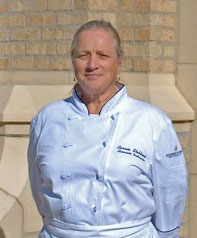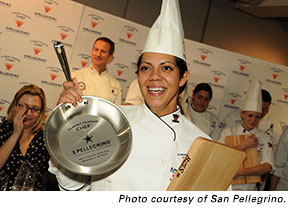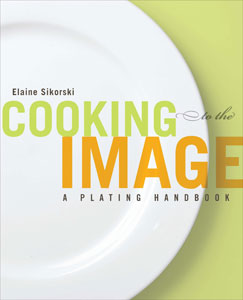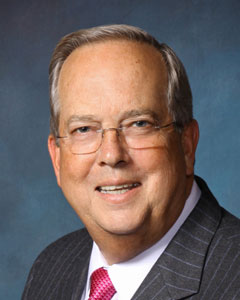Chefs Speak Out: A Green Thumbs up
 Like the many herbs cultivated for healthy, flavorful dishes and cocktails at the new Seasons 52 in West Los Angeles, executive chef and partner Jessica Koine finds a place to grow.
Like the many herbs cultivated for healthy, flavorful dishes and cocktails at the new Seasons 52 in West Los Angeles, executive chef and partner Jessica Koine finds a place to grow.
By Lynn Schwartz
It is not unusual for chefs of small, independent restaurants to be committed to a seasonal menu. They often support local farms and farmers’ markets in an attempt to bring the freshest ingredients to their customers. But it is impressive when a corporate, multiunit company is forward-thinking enough to practice a similar sustainable philosophy.
Seasons 52 (a brand of Orlando-based Darden Restaurants, Inc., the world’s largest full-service restaurant company, including Red Lobster, Olive Garden and The Capital Grille) is capitalizing on the growing consumer interest of eating with the seasons. Not only does Seasons 52 purchase locally, but they are dazzling customers with an extensive, indoor herb garden and a spectacular outdoor “living wall” of culinary and non-edible plants. As executive chef of the recently opened Century City venue in the heart of West Los Angeles, Jessica Koine must create seasonal, health-oriented dishes that are less than 475 calories. She must also cultivate her green-thumb abilities while tending to more than 150 edible plants.

 Assigning students to write a white paper can help them focus on an audience, develop an appropriate voice, learn to make a solid case with evidence and conduct careful research.
Assigning students to write a white paper can help them focus on an audience, develop an appropriate voice, learn to make a solid case with evidence and conduct careful research. S
S Rotating groups through learning modules keeps students engaged while enhancing their skills development.
Rotating groups through learning modules keeps students engaged while enhancing their skills development. Coors Recycles® teams up with Recyclebank® to reward consumers for their environmental efforts.
Coors Recycles® teams up with Recyclebank® to reward consumers for their environmental efforts. Highly accomplished chef, restaurateur and author Waldy Malouf has a new mission. After a successful 13-year run as co-owner and chief operating officer of Beacon in New York City, Malouf became the senior director of special projects at The Culinary Institute of America (CIA) in Hyde Park, N.Y., on January 21, 2013.
Highly accomplished chef, restaurateur and author Waldy Malouf has a new mission. After a successful 13-year run as co-owner and chief operating officer of Beacon in New York City, Malouf became the senior director of special projects at The Culinary Institute of America (CIA) in Hyde Park, N.Y., on January 21, 2013. As the city’s financial district bustled through its morning rush hour outside of the historic Union League Club of Chicago, inside, 98 students of The French Pastry School of Kennedy-King College at City Colleges of Chicago took the first steps toward beginning their new vocation. Graduates of the full-time programs, L’Art de la Pâtisserie and L’Art du Gâteau, celebrated their commencement on the same day that the school received one of the highest honors that educators can be given by the French government: Ordre des Palmes Academiques (Order of Academic Palms), a recognition that was instituted by Napoleon to award “teaching and the development of knowledge.”
As the city’s financial district bustled through its morning rush hour outside of the historic Union League Club of Chicago, inside, 98 students of The French Pastry School of Kennedy-King College at City Colleges of Chicago took the first steps toward beginning their new vocation. Graduates of the full-time programs, L’Art de la Pâtisserie and L’Art du Gâteau, celebrated their commencement on the same day that the school received one of the highest honors that educators can be given by the French government: Ordre des Palmes Academiques (Order of Academic Palms), a recognition that was instituted by Napoleon to award “teaching and the development of knowledge.” On Jan. 14, Sullivan University student Kamisha Jones won first place at the S.Pellegrino
On Jan. 14, Sullivan University student Kamisha Jones won first place at the S.Pellegrino  Chef Elaine Sikorski, CEC, CCE, an instructor at Kendall College School of Culinary Arts, is the author of the recently published
Chef Elaine Sikorski, CEC, CCE, an instructor at Kendall College School of Culinary Arts, is the author of the recently published  Club Managers Association of America (CMAA) CEO James B. Singerling, CCM, on Jan. 16 announced his intention to retire in 2015, completing 25 years of service. The early timing of the announcement is consistent with the terms of Singerling’s contract and will allow him to assist in the transition to a new CEO by his retirement date.
Club Managers Association of America (CMAA) CEO James B. Singerling, CCM, on Jan. 16 announced his intention to retire in 2015, completing 25 years of service. The early timing of the announcement is consistent with the terms of Singerling’s contract and will allow him to assist in the transition to a new CEO by his retirement date.